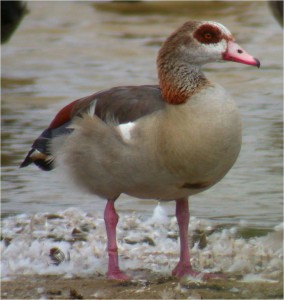One of the best things I have added to my garden in recent years has been a bird feeder designed to hold Nyjer seeds. The seeds of this African yellow daisy are rich in oil and protein. Their fat content gives small birds the energy they need to survive the winter and the protein helps them renew their plumage for the breeding season. Goldfinches adore my Nyjer feeder. Sometimes up to ten at a time will surround it waiting to access the seeds while making their characteristic trilling song. The collective noun for Goldfinches, a charm, is said to be derived from the Old English word describing the birds’ twittering repertoire.
Following declines in the 1970s and 1980s, Goldfinches have become increasingly common in Berkshire while more than doubling their national population according to census data. They began to use bird feeders widely in the 1990s and current garden bird surveys record them from 58% of participating gardens. After the breeding season, Goldfinches can accumulate in large flocks (the Berkshire Bird Atlas records groups of 250 or more locally) and they love to feed on thistledown, the seeds of which are similar in size to Nyjer. In fact, the scientitifc name for Goldfinch, Carduelis carduelis, is derived from the Latin for thistle, Carduus.
Goldfinches have not always been common locally. In 1868, Clark Kennedy, the 16-year-old Etonian who wrote the first ever book containing photos of birds, stated that Goldfinches were uncommon in Berkshire and Buckinghamshire. Indeed, the popularity of Goldfinches as caged birds in the Victorian era meant that the population went into severe decline due to over-collecting by birdcatchers. Actually, keeping Goldfinches as pets is nothing new. Donna Tartt’s latest (2013) best-selling novel, The Goldfinch, features a seventeenth century painting featuring a chained-up Goldfinch. One of the first acts of the RSPB, after it was founded in 1904, was to protect this colourful species.
The photo has been kindly provided by Gordon Langsbury of the Berkshire Bird Atlas project www.berkshirebirdatlas.org.uk The black and white image by David Thelwell has been reproduced with permission from The Birds of Berkshire.




